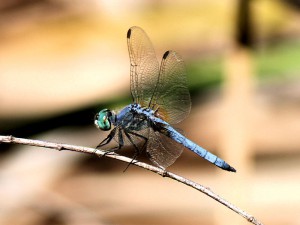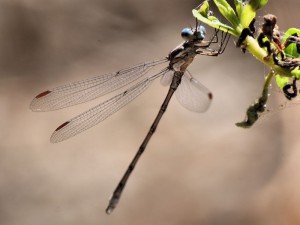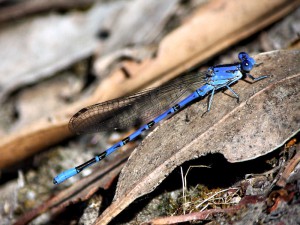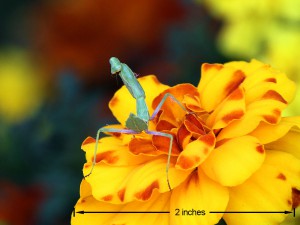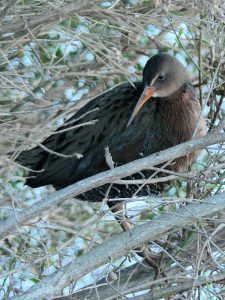Lately, we’ve been digiscoping insects while field-testing the Swarovski ATX/STX modular spotting scopes. One of the stand-out features of these scopes is their superb digiscoping capabilities. The scope’s 65-mm objective module close-focuses to 6-feet, meaning it works almost like a macro lens. We played with the scope to see how it would perform taking pictures of dragon- and damselflies. All these odes inhabited a quiet little stream less than a mile from our store!
Blue Dasher
This is a male Blue Dasher, Pachydiplax longipennis, a common dragonfly of southern California. Note the blue abdomen, sea-green eyes and white facial plate, and subtle amber patch on the hind wings. Females are browner on the thorax and abdomen, with cream markings for accent, but they still have the green eyes and white facial plate. Territorial males frequently chase each other around. We commonly find Blue Dashers, members of the skimmer family, over rivers, ponds and streams. They tend to hunt from perches, which means they?re often stationary, making them much easier to photograph!
California Spreadwing
This blue-eyed beauty is a male California Spreadwing damselfly, Archilestes californica. Spreadwings are unusual among damselflies in that they often perch with the wings wide open. The California Spreadwing is told from the Great Spreadwing by the white markings on the thorax flanks, and the two-toned pterostigma. Like the Blue Dasher, this spreadwing is a sally hunter. That means it hawks prey from a perch to which it often returns. To photograph them, we focused on the perch and waited for the hunter to return.
Vivid Dancer
Lastly, here’s a brilliant blue male Vivid Dancer damselfly, Argia vivida. Distinguish these gorgeous little damselflies from other similar species by the carrot-shaped black marks on the abdominal segments. This species occurs in every single county in California, making it our most common one. When Vivid Dancers emerge from their nymph forms, a pale gray pruinescence coats them. That wears off with time to reveal their brilliant color. Vivid Dancers often perch away from water, on rocks, logs and shrubs, as these were doing when we found them.
All these pictures were taken with the Swarovski ATX-65 spotting scope, equipped with the TLS-APO digiscoping adaptor, using a Canon 40D camera.

